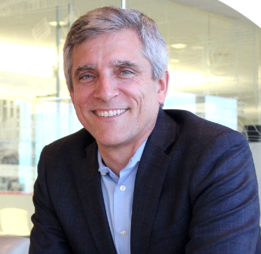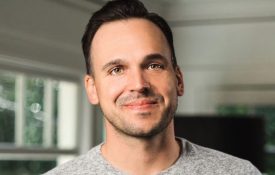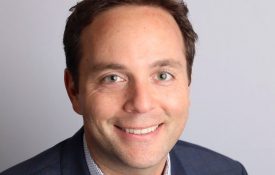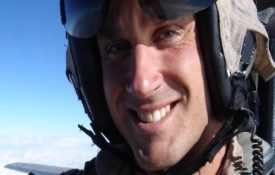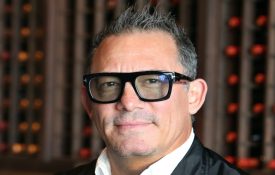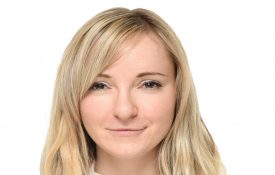What are your biggest business concerns surrounding COVID-19?
We are fundamentally service providers and gauge the effectiveness of our activities in our practice areas by focusing on how we can help our clients the most. As an industry leader in healthcare design, we are working with health systems around the world to evaluate their facilities and make sure they are ready for the next wave or pandemic. The immediate efforts were to help providers address potential surges in patients, but we are also helping them look long term at their overall facilities and addressing the issue of long-term resiliency. We have large hospitality and aviation practices, and these clients are keenly focused on when consumer confidence will return for business and leisure travel and entertainment. Additionally, as we finish the largest multi-sport stadium complex in the world in Inglewood [SoFi Stadium, which will host the Los Angeles Rams and Chargers], our sports practice has pivoted to evaluate the impact of social distancing on competitive sport venues and how to create an experience for fans and players without 70,000 people in the stands cheering on their team.

Rooftop views from the West Hollywood Edition Hotel, which HKS designed in association with Ian Schrager and John Pawson.
Our higher-education clients now have increased demands for more space under the mandates of reduced class size and lower-occupancy dorm rooms. Our office buildings across the US are sitting mostly vacant while we figure out what is the best way forward in creating the next generation of work environments. Meanwhile, the tech industry is thriving during this pandemic as more people rely on technology to live their lives and perform their jobs. Will these companies need or want to build new headquarters for their growing workforces if more of their people opt to work from home?
We’ve have seen some shifts in requests from clients. For instance, sports clients asking for assistance in planning for spectator-free events, schools asking for help evaluating social-distancing implementation in their existing facilities, as well as some very quick work we did to convert convention centers into pop-up hospital wards to deal with anticipated waves of pandemic patients. We also have done studies on what it would take to covert hotels into care facilities, and how to optimize apartments to allow for intensive work from home demands for the foreseeable future.

The SoFi Stadium in Inglewood, which is set to host the Los Angeles Rams and Chargers.
Most of our clients take the long view and see the potential for this global event to force some correction to the runaway price escalation that had been an ongoing challenge on project budgets. The fundamentals of the economy going into the pandemic were strong, and California is still the most desirable place in the US to work, live, and visit for many people. We still have a huge demand for multi-family housing, our airports still need updating, and our transportation system still needs radical improvements. So, while we have seen some projects go on hold, or slowdown, overall the breadth of our practice has remained incredibly busy during this quarantine period.
What is your current business strategy for dealing with the situation?
We speak a lot about resiliency as a mode of thinking that is looking to the future and is responsive to climate change or other environmental or social upheavals that can affect our clients and our world. This pandemic is a call to action for all of us, and we have been deploying this approach in our own business long-term strategy. We conducted a remote work dry run before the official lockdown to test our network systems, and it went off very well. We were able to pivot smoothly when the lockdown began. We had already instituted a flexible work arrangement for people who had challenges with the LA commute, so there was a good percentage of people who this did not present any change to their normal workflow. Firmwide, we’ve convened a re-boot task force that gathers leaders from across the globe to look at best practices for opening up our offices.

The UCSD Torrey Pines Living and Learning Center—a 2,000-bed student housing facility in San Diego.
The shift from March to now is most acutely being felt in states where there was a rush to re-open, where now they are seeing a big uptick in cases. Even though our offices stayed open in these locations, very few people are coming into the physical office. Globally, we have had a Covid-related death in the firm, so we are taking this very seriously. We are not insisting that anyone come back to the office if they are not comfortable, but in places like Shanghai, for example, our offices have been back in business for some time—but even there, only a fraction of our people are coming into the office regularly.
To help us manage this, we are using the Shifts function on Teams to monitor how many people can come back to an office at a given time, establish social-distancing seating, and have everyone sign a form attesting to their health status prior to their ability to come back to the office. This also helps with contract tracing if someone does become ill and helps us understand when people are in and out of the office.
The tech industry is thriving during this pandemic as more people rely on technology to live their lives and perform their jobs. Will these companies need or want to build new headquarters for their growing workforces if more of their people opt to work from home?
We see great value in working together but are implementing a process of evaluating the compelling business case for in-person meetings and virtual meetings. Everyone I talk with is struggling to manage boundaries of personal time versus continued demands for Zoom meetings. There is intense focus on monitoring the status of the markets and our business, so there is an increased demand for meetings and strategy sessions. To address this, we are asking our people to deploy purposeful and deliberate thinking about the need to meet, which has changed radically from prior to the quarantine where the default impulse was for meetings with large groups. Many of our projects are large and complex, and we know these work sessions are very productive, but we have to be more mindful of the cumulative impact this is having. With this back-to-back scheduling of meeting after meeting online, there is the missing component of the socialization that was a part of face-to-face engagement, so the long-term cultural effects are still emerging.
How do you think things will look in your industry a year from now?
Our industry has historically not been innovative and has been very wasteful. The nature of building a building has not fundamentally changed in a few hundred years. To combat this and press for innovation in the process, we have been looking at advanced building, design, and fabrication methods. We have an opportunity, and now an even more pressing obligation to extract value and efficiency from our delivery model—things like modular solutions, pre-fab, and new software scripts that we have written that are having a big impact on how our projects are created. This demand is only going to accelerate. Funding sources may become scarcer, and uncertainty about the risks associated with development can be mitigated through new processes.

The firm’s upcoming project, the Robertson Lane Hotel in West Hollywood.
We can also leverage advanced technology to create new digital experiences. The line between our digital (cloud print) and physical (footprint) worlds is converging. Architects have an opportunity to infuse technology in physical space in new ways that help our clients create new revenue streams and engage their customers. This convergence is playing out in interesting ways with the rapid advancement of e-sports as one of the largest fan-base experiences in the world. This approach will impact many aspects of our experiences—from the delivery of healthcare, the hotel guest experience, the extended workplace, and how we live in our homes.
I believe this work-from-home scenario has proved itself to be quite advantageous for a lot of our people, and many of our people were self-selecting to operate this way prior to the pandemic, so I see some version of this continuing into the future. It is empowering for people to have flexibility for childcare issues, commuting time, and schedule control over their lives, as long as they are being effective in their work. This a big shift that I think no one will be in a hurry to forego. That being said, this has created a host of new challenges for people: their home is now a school, an office, and their only source of social engagement. We need to understand that this new paradigm is likely with us for quite some time. The question now becomes what is the character and value of the city outside your door, and what you want and need that you can’t get remotely? What will the retail experience look like if it’s safer to buy everything online? When we return to offices, what will the purpose of being there be? These are fundamental questions that require shifts in thinking and behavior and have direct impacts on real estate. As an architect, I see a big challenge ahead to help shape this next wave of social-interaction spaces and how design can help facilitate new ways of working and living.

The 112,000-square-foot USC Norris Healthcare Center is a major regional and national resource for cancer research, treatment, prevention, and education at the university’s South Central Los Angeles campus.
What have you learned from other difficult times in the past?
Diversification is key. The firms that are narrowly focused on one sector see their fortunes rise and fall with that sector, which right now is a tough spot to be in. HKS is fortunate to have invested deeply into technology as well as peripheral services beyond the core business of architecture. We are working as strategic advisors to our clients to help them through their key business challenges where a building may not be the best solution. During the Great Recession we also invested in developing our capacity to work in alternative delivery models for the public sector. We learned from that experience and have restructured our firm to be able to shift within the markets and adapt to follow the capital flow for work.
Safe–and entertained–at Home: What business leaders are doing with their downtime
Morning routine?
I am up early—before everyone else in the house, so my day starts with breakfast and tea and a short journey outside to the home office I’ve set up in the garage. That little walk outside helps me prep for the day and gets me in the zone. The days are longer than ever to accommodate increased connectivity across our global firm, but without the change of scenery that heading into the office provides.
Currently binging?
I used to see all new movies on airplanes and saw way more films than anyone in my family, but with no travel, I have fallen behind. We’ve caught up on a few films and we just streamed Hamilton on the 4th, which was fantastic. The kids prefer YouTube on their iPads, but we have been binging Community together, which is like fast food for your brain. My youngest just discovered The Simpsons, which is hilarious since it has been on the air for decades. It is still funny, and I get a kick out of him loving it too.
Currently reading?
I picked up some of the books on my high school son’s reading list that I somehow missed: Beowulf, Frankenstein, and a few others. I also dove into some classics I had never read: Thucydides tells a great tale about how nationalism and pride tore apart ancient Greece, and it is pretty relevant today and is not as dry as it sounds! A plague hit the Athenians and some of their brightest minds were lost then. It is amazing how little things have changed on some level.
What are you doing to spend quality time with those you’re sheltering with?
My kids are very musical, so between the electric guitars, synthesizers and singing, it is rarely quiet around the house—which is fun. A more focused activity had us tackling a 10,000-piece jigsaw puzzle, which was killer and nearly made us crazy. This past weekend I’ve been planting some citrus trees, which is satisfying physical labor and is something we have wanted to do for a while.
What are you doing to stay healthy mentally and physically?
My family and I have been hiking deep into the San Gabriel mountains, and we’ve bagging a few peaks over 9000’. It is a majestic wilderness in our backyard in LA, and it has brought us together doing something inspiring that also gets us in shape. I’ll strap the bike onto the back of the car and take a ride on the bike path when the beaches are open. It is a bit challenging to ride hard with a mask, but it does wonders for my mental health. Evening walks around the neighborhood have become a bit of ritual for us and have fostered good conversations.
Where are you dreaming of visiting once things are back to normal?
My kids are itching to get back to Hawaii to visit their newborn cousin—as well as enjoying the amazing beaches. We had a trip to Italy that we put on hold for now—looking to get back there when it is okay to do so.






































